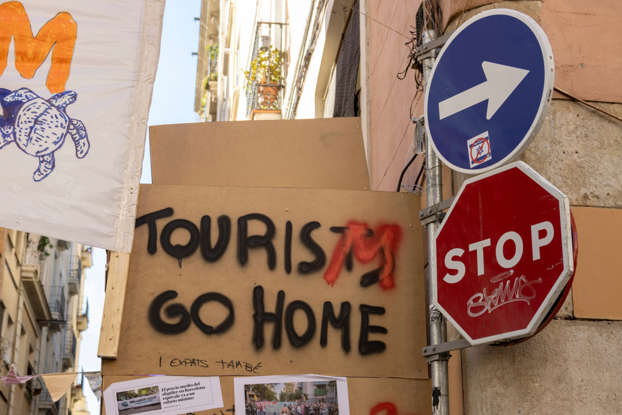Introduction to Overtourism
Traveling is one of life’s greatest joys. Exploring new places, immersing ourselves in different cultures, and tasting exotic cuisines are experiences that enrich our lives. However, as the popularity of certain tourism spots skyrockets, a pressing issue has emerged: overtourism. This phenomenon occurs when destinations become so overwhelmed by visitors that they lose their charm and authenticity. The impact can be devastating for local communities, economies, and even the environment.
As travelers who cherish these experiences, it’s essential to understand how our choices affect these beloved locales. By adopting responsible travel practices, we can protect the very destinations we love while still enjoying all they have to offer. Let’s delve into what overtourism means and discover how we can make a positive difference on our journeys around the globe.
Negative Impact of Overtourism on Destinations
Overtourism brings a host of challenges to popular tourism spots. Local infrastructure often crumbles under the weight of excessive visitors. Roads become congested, public transport strains, and essential services struggle to keep up.
Natural landscapes suffer too. Parks and beaches can become littered with waste, while wildlife is disturbed by constant human presence. This disruption threatens ecosystems that took centuries to develop.
Communities feel the impact as well. Residents might find their neighborhoods transformed into tourist traps, leading to an increase in living costs and a decline in local culture. Authentic experiences can be overshadowed by commercialized offerings aimed at tourists.
The charm of once-peaceful destinations fades when they are overrun by crowds chasing selfies rather than genuine interactions. The essence of what made these places special often gets lost amid the chaos caused by overtourism.
Factors Contributing to Overtourism
The rise of social media has significantly fueled overtourism. Picture-perfect destinations often go viral, attracting throngs eager to replicate those stunning shots. This digital influence can quickly overwhelm local communities.
Additionally, budget airlines have made travel more accessible than ever. Low-cost fares encourage spontaneous trips to popular tourism spots that may not be equipped for massive crowds.
Seasonal patterns also play a role. Many travelers flock to the same locations during peak seasons, leading to congestion and strain on resources.
Moreover, marketing campaigns by governments and businesses often promote these hotspots without considering sustainability or community impact. The focus shifts toward short-term economic gain rather than long-lasting benefits for residents and environments alike.
Inadequate infrastructure in many areas struggles under the weight of increased visitor numbers. Public transport systems become overwhelmed, and natural sites suffer irreversible damage from foot traffic alone.
Responsible Travel Practices
Traveling responsibly starts with being mindful of your surroundings. Choose eco-friendly accommodations that prioritize sustainability. Look for hotels and lodges committed to reducing waste, conserving energy, and supporting local communities.
When exploring popular tourism spots, opt for public transportation or bike rentals instead of taxis or rental cars. This not only reduces your carbon footprint but also allows you to experience the destination like a local.
Respect cultural norms and traditions by learning a few basic phrases in the local language. It shows appreciation and fosters goodwill between travelers and residents.
Always pack reusable items such as water bottles, shopping bags, and utensils. This small change can significantly lessen plastic waste in beautiful destinations.
Engage with local businesses rather than large tourist chains. By doing so, you directly contribute to the community’s economy while enjoying authentic experiences that larger corporations often overlook.
Alternative and Off-the-Beaten-Path Destinations
When it comes to travel, the world is full of hidden gems waiting to be discovered. Instead of flocking to crowded tourism spots, consider exploring lesser-known destinations.
Places like Slovenia’s Lake Bled offer stunning natural beauty without overwhelming crowds. You can hike around its pristine waters or explore medieval castles perched on cliffs.
In Portugal, the Alentejo region boasts charming villages and vast vineyards that provide a peaceful escape from busy tourist hubs. Here, you can savor local wines while soaking in picturesque landscapes.
For those yearning for adventure, Mongolia’s vast steppes are perfect for experiencing nomadic culture firsthand. The open space allows for introspection and connection with nature.
By choosing these alternative routes, travelers not only enrich their experiences but also help relieve pressure from popular sites struggling with overtourism. Each journey becomes an opportunity to create meaningful memories away from the masses.
Educating Others on Overtourism
Raising awareness about overtourism is essential. Sharing knowledge can empower fellow travelers to make better choices.
Start conversations with friends and family. Share articles, documentaries, or personal experiences that highlight the realities of overcrowded destinations. Social media is another powerful tool; post about your travels while emphasizing responsible practices.
Participate in local forums or community events focused on tourism sustainability. Engaging with others creates a network of mindful explorers who are passionate about preserving our planet’s treasures.
Consider volunteering for organizations dedicated to sustainable travel initiatives. These groups often provide resources and information that help spread the word effectively.
Encourage discussions around alternative tourism spots as well. When people learn about hidden gems off the beaten path, they become more open to exploring lesser-known locations rather than following crowded tourist trails.
Making a Positive Impact as a Traveler
Travel can transform lives and connect cultures. It’s vital for each of us to take responsibility for our choices while exploring tourism spots around the globe. Every trip offers an opportunity to make a positive impact on local communities.
Start by supporting local businesses. Choose accommodations that prioritize sustainability, eat at family-owned restaurants, and shop at markets selling locally-made products. This way, your travel dollars directly benefit the community you’re visiting.
Engage with locals respectfully. Learn about their customs and traditions instead of imposing your own expectations on them. Your willingness to understand their culture fosters meaningful connections and promotes cultural exchange.
Participate in eco-friendly activities like hiking or wildlife watching while being mindful not to disturb natural habitats or wildlife populations. Responsible behavior ensures that future generations can enjoy these beautiful landscapes too.
Volunteer opportunities are often available in popular destinations, allowing travelers to give back while experiencing life from a different perspective. Whether it’s helping with conservation efforts or teaching English, these experiences enrich both visitors’ lives and those they assist.
Be conscious of how many people visit certain attractions during peak times—try traveling off-season if possible. This small change helps alleviate pressure on overwhelmed sites while offering a more enjoyable experience without crowds.
As you roam through bustling cities or serene countrysides, remember that every action counts towards creating sustainable tourism practices. By embracing responsible travel habits today, we pave the way for better adventures tomorrow—both for ourselves and those who come after us.




